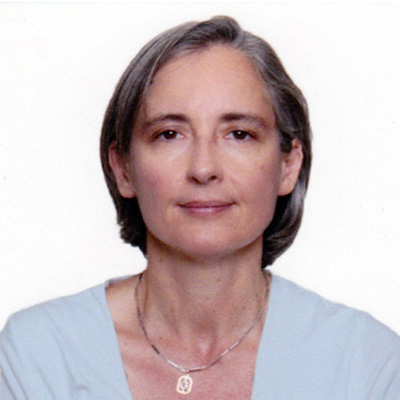Elucidating the mechanisms that go awry during brain development will help improve therapy for developmental brain disorders
Cortical dysplasia is a group of brain malformations that ensue during the developmental process, causing cognitive disorders and drug-resistant epilepsy in children. This group of disorders includes overgrowth of the entire brain (megalencephaly), one hemisphere (hemimegalencephaly) or localized malformations (focal cortical dysplasia and tuberous sclerosis complex). In cortical dysplasia, some brain cells become excessively large and misshapen, disrupting the anatomical organization and the functional circuitry of the cerebral cortex. Due to a lack of available medicines, children diagnosed with cortical dysplasia often go through surgery to have parts of their brain or an entire hemisphere removed in an attempt to stop the seizures. However, this type of intervention is not always effective, and it is traumatic for the parents and has undesirable side effects for the children. Dr. Gabriella D’Arcangelo, Associate Professor of Cell Biology and Neuroscience at Rutgers University, studies the molecular mechanisms controlling brain development and works to leverage this knowledge to improve the treatment of children affected by developmental brain disorders. By identifying drug targets and specific pathways, Dr. D’Arcangelo hopes to develop pharmaceutical options that will reduce the need for brain surgery.
Through the work of her group and others, researchers now understand that these brain malformations result from the excessive activity of a set of proteins that function together in a signaling cascade. Central to this signaling cascade are the proteins Akt and mTOR, which are well-known to promote cell growth. These proteins are also active in many types of cancers, and FDA-approved drugs that suppress them have been developed. Therefore, Dr. D’Arcangelo is now trying to apply and repurpose these drugs to treating cortical dysplasia, by studying whether Akt and mTOR inhibitors can reverse the growth abnormalities of mutant brain cells without affecting their viability and testing their effectiveness using animal and models based on human stem cells. For this new project in collaboration with researchers at the New York University and Baylor College of Medicine, Dr. D’Arcangelo aims to determine whether Akt or mTOR inhibition is a viable strategy for developing novel treatments to cure brain malformations or to ameliorate the neurological symptoms of the patients.
Current research includes:
- Animal models for cortical dysplasia: Conditions like megalencephaly, hemimegalencephaly or focal cortical dysplasia are not due to germline mutations but to somatic mutations in brain cells that alter Akt and mTOR signaling during development. Other disorders such as tuberous sclerosis complex are due to germline mutations that result in elevated mTOR activity. By recapitulating signaling problems in animal models and studying abnormal molecular events during brain development, Dr. D’Arcangelo will be able to characterize phenotypes and elucidate mechanisms leading to malformations.
- Correction of the problem in cortical dysplasia: The findings in the animal models for non-hereditary or heritable cortical dysplasia can be translated into treatment development that will correct the brain malformation. Currently testing the suppression of animal phenotypes with an appropriate drug targeting Akt or the mTOR pathway, Dr. D’Arcangelo hopes to find viable pharmaceutical solutions to suppress the manifestations of neurological problems in children.
- Induced pluripotent stem cell model for tuberous sclerosis complex: tuberous sclerosis complex is a type of cortical dysplasia that is caused by known genetic mutations. Using induced pluripotent stem cells derived from the blood of tuberous sclerosis complex patients and their unaffected siblings, brain cells such as neural progenitors, neurons and glia can be produced in a dish. Dr. D’Arcangelo observes how these human brain cells develop, and identifies cellular and molecular abnormalities, hoping to identify drug targets.
- Suppressing tuberous sclerosis complex phenotypes: Dr. D’Arcangelo is testing the effectiveness of drugs to suppress the tuberous sclerosis complex defect in stem cell-derived brain cells, and hopes that such translational work will lead to practical solutions to treating patients with this disease.
Bio
Dr. Gabriella D’Arcangelo is Associate Professor of Cell Biology and Neuroscience at Rutgers University, whose goal is to understand how neurons become organized into cortical structures, differentiate and establish synaptic contacts to form functional circuits, and then maintain connectivity throughout life or regain it after injury. By elucidating molecular and cellular aspects of brain development and function in mouse models and human pluripotent stem cells, Dr. D’Arcangelo’s work provides critical information that is relevant to understand the etiology of human developmental and degenerative brain disorders, and to elucidate mechanisms of recovery from injury. This knowledge will be leveraged to improve the treatment of patients affected by neurological disorders or brain injury.
Dr. D’Arcangelo has always been interested in biology and grew up watching nature and animals shows on TV. She always carried a passion for understanding how the brain works, but watching her brother suffer from severe brain damage due to meningitis reinforced her desire to contribute to the treatment of devastating childhood neurological diseases. She was exposed to clinical problems early on when she followed her family to institutions to seek therapy for her brother, and became very sensitive to the needs of patients who had to live with profound intellectual disability and their families who had to suffer along with them. Now, she hopes that studying brain developmental disorders will help significantly improve treatments and reduce the consequences that patients and families have to face.
Outside of her research, Dr. D’Arcangelo is a mother of three, with two teenage daughters and a younger boy. She likes to cook and take long walks with her Labrador dog. She also likes to play many sports, even at a very “low level,” and particularly enjoys playing soccer and volleyball with her students and baseball with her son.
For more information, visit https://cbn.rutgers.edu/faculty/userprofile/darcange
In the News
Rutgers Media Relations Office, June 10, 2009.
ABC News, 2009
Publications
Awards
R21 award “Identification of TSC cellular phenotypes using patient-derived iPSCs”, 2014
National Institutes of Health -- National Institute of Neurological Disorders and Stroke (NINDS)
Research award, 2014
Tuberous Sclerosis Alliance
Exploration-Hypothesis Development Award, 2012
Department of Defense, Congressionally Directed Medical Research Programs, Tuberous Sclerosis Complex Research Program
Julie’s Hope Challenge Award, 2007
Citizens United for Research in Epilepsy (CURE) Foundation
The Rhode Island Award, 2005
Citizens United for Research in Epilepsy (CURE) Foundation
Distinguished Alumnus Award, 2003
Grad Program in Neurobiology and Behavior, SUNY at Stony Brook
Junior Investigator Award, 2002
The Epilepsy Foundation
Patents
U.S. Patent No. 6323177: "Interaction of reelin with low density lipoprotein (VLDL) receptor for screening and therapies"
Contributors: D’Arcangelo G and Curran T, St Jude Children’s Research Hospital. Issued 11/27/01.


